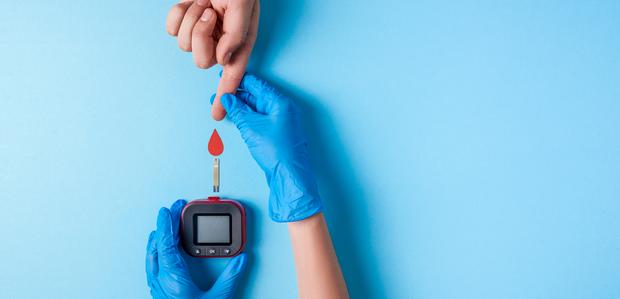Department of Diabetology

Diabetes is the most prevalent metabolic condition wherein the body experiences high levels of blood sugar for a prolonged period. The increasing prevalence of Diabetes and related conditions, changing patient needs, and advanced technology led to a change in the approach to Diabetes care and management. The condition has seen a great increase in incidences over the past few decades with millions of patients across the country and the world. Diabetologists at Gleneagles Hospitals who are highly trained and skilled offer comprehensive care to the patients. The Department ensures that the patients get the best treatment available for Diabetes.
The Department identifies the requirements of the patients and prioritizes quality care so that the patients have access to a wide range of services offered. Employing state-of-the-art technology the Department seeks to bring complete Diabetic care under one roof while employing lifestyle and nutritional counseling as a component of the treatment.
The multidisciplinary team offers total care for patients with Diabetes such as managing Diabetic Foot Ulcers, Diabetic Nephropathy, Diabetic Retinopathy, and Diabetic Neuropathy.
Services offered by the department include the following:
- Screening programs to rule out Diabetes in the early stage
- Comprehensive Diabetic Checkup Package
- Detailed clinical assessments and management by Diabetologists
- Therapy for the Diabetic complications & managing emergency Diabetic disorders
- Dietetic and Nutrition department to guide you for a healthy living with Diabetes
- Education programs to increase awareness about Diabetes, its complications and prevention
Know more about Diabetes
Symptoms of Diabetes
Consult your doctor if you are experiencing one or more of the following symptoms of Diabetes:
- Blurred vision
- Increased thirst
- Excessive hunger
- Increased frequency of urination
- Fatigue
- Abrupt and rapid weight loss
- Numbness in the hands or feet
- Delayed healing of wounds
Causes of Diabetes
Early detection of Diabetes helps prevent severe complications. Know the factors that may increase your risk of Diabetes.
- Family history of Diabetes
- Increasing age
- Being pregnant
- Taking certain medicines
- Physical inactivity and Obesity
- History of pancreatitis
BEST DIABETOLOGY HOSPITAL IN INDIA FOR TYPE 1 AND TYPE 2 DIABETES TREATMENT HOSPITAL IN INDIA
Advanced facilities for Diabetes treatment with excellent diagnosis and affordable cost of Diabetes treatment in India
Gleneagles Hospitals India is the best Diabetology hospital in India offering the best Type 1 and Type 2 Diabetes treatment and care for Diabetes related conditions with the best Diabetology doctors in India. Helmed by the best Diabetologist doctor in India, the hospital today is recognized for its exceptional Diabetics care and advanced treatment. Our hospital brings a wealth of experience and wide-ranging expertise that has helped us grow into the Diabetology hospital in India.
Our Doctors
View all-

Dr Mita Shah
Senior Consultant
MBBS, D. Diabatology
-

Dr Aarti Ullal
Senior Consultant
MBBS, DNB, F.Diabetology
BRINGING THE LATEST TECHNOLOGIES FROM AROUND THE GLOBE FOR ACCURATE DIAGNOSIS AND TREATMENT OF DISEASES
Diabetes is one of the most common lifestyle ailments worldwide. Although it is seemingly dormant, Diabetes is the precursor to various other ailments as well. Patients with Diabetes ought to take extreme care with their lifestyle. The Department of Diabetology at Gleneagles Hospitals provides comprehensive Diabetes management programs. These are holistic lifestyle methods including clinical interventions. The department employs some of the country’s most well-known Diabetologists to deliver the best Diabetic care for the following disorders.
Why Choose Us
-
PATIENT EXPERIENCE
Your care and comfort are our top priorities. We ensure that the patients are well informed prior to every step we take for their benefit and that their queries are effectively answered.
-
LATEST TECHNOLOGIES
The Gleneagles Hospitals team stays up to date on the advancements in medical procedures and technologies. Experience the Future Healthcare Technologies now at Gleneagles Hospitals.
-
PROVIDING QUALITY CARE
Strengthening lives through compassionate care, innovative therapies and relentless efforts. It is reflected in the DNA of our passionate team of doctors and dedicated clinical staff.










